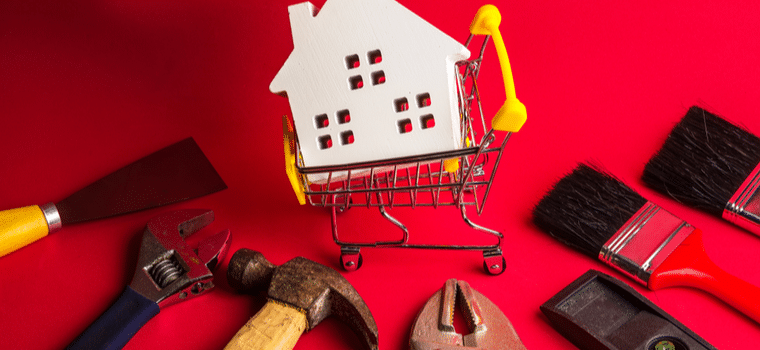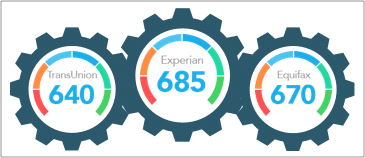Any loan that you use to repair or improve your home can be considered a home improvement loan. Because of this, there are several types of loans that can be used to fund home improvements, each with its own advantages, disadvantages, and risks. Several government agencies also have programs designed to help borrowers with low incomes or poor credit finance necessary home repairs.
In each case, you will need to identify the project you have in mind and develop a clear and realistic budget for the project. Then you can assess the different types of loans, choose the type that suits your needs, and shop around for the lender that delivers the best loan for you.
What Kinds of Loans Can Be Used for Home Improvement?
Home improvement loans fall into two broad categories: secured and unsecured. The type of loan you choose will depend on your intended project, your credit, the amount of equity you have in your home, and your assessment of the risks and benefits of each type.
Secured Loans
A Home Equity Line of Credit (HELOC), a home equity loan and a cash-out refinance are all secured loans. In each case, you are using your equity in your home as collateral to secure the loan that you’ll use for home improvement.
Because these loans are secured by collateral, they present less risk to the lender than an unsecured loan. That lower risk means they may carry lower interest rates than unsecured loans, the credit requirements may be less restrictive, and approval may be easier. The downside of that is that less risk for the lender means more risk for you. If you can’t pay the loan, you could lose your home.
Secured loans generally have easier approval standards and lower interest rates than unsecured loans, but they still have requirements. If your credit is in bad shape, you may have to pay a high-interest rate and you may not be approved at all.
If you don’t have enough equity built up in your home, you may not be able to use these loans. Lenders may expect your equity – the amount you have paid on your home to date – to be at least 15 to 20 percent of the home’s appraised value.
You may be able to get a tax deduction for the interest you pay on a HELOC, home equity loan, or cash-out refinance that is used for home improvement if the project you are financing meets IRS criteria.
Unsecured Loans
Unsecured personal loans are often used for home improvement. Some lenders may offer personal loans specifically oriented toward home improvement, and they may call these loans home improvement loans.
Personal loans have no collateral, so the lending criteria may be strict and the interest rates may be high. If your credit is flawed, you may have trouble getting approved or you may pay a very high-interest rate.
If you have good credit, consider applying for a credit card with an introductory zero APR promotion. These promotions often last from 15 to 21 months. If you use this card for home improvements and pay off the balance within the promotional period, you will effectively have a zero-interest unsecured loan. Be sure the cost of your planned repair does not exceed the card’s credit limit and remember that if you don’t pay off the balance before the promotional period expires, you may pay a very high-interest rate.
Government-Supported Home Improvement Loans
Several US government agencies offer programs designed to provide home improvement financing for qualified borrowers. Some may even provide outright grants. You may also qualify for state or local assistance programs, depending on your location.
In most cases, these loans are provided by private lenders. The government agency usually sets the minimum requirements and provides loan insurance. The insurance reduces the lender’s risk and makes them more willing to lend with lower approval standards.
- FHA 203(k) Improvement loans are designed to support the purchase and repair of a house but can also be used for home improvements. You will need to meet a minimum credit score requirement.
- FHA Title 1 loans fund home improvements, repair, and rehabilitation. Loans under $7500 may be unsecured; larger loans may require collateral.
- US Department of Agriculture Section 504 loans and grants fund repairs and improvements in qualifying rural and suburban areas. These loans are specifically aimed at low-income households.
- Property Assessed Clean Energy (PACE) loans fund improvements specifically designed to save water or energy. PACE loans are secured by your home, so there is some risk.
- TheLow Income Home Energy Assistance Program (LIHEAP) provides financing to low-income families that need weatherization or energy-related home repairs.
- TheNational Residential Improvement Association (NRIA) does not give loans but will help you identify national, state, and local loan or grant programs that may meet your needs. NRIA assistance is provided free of charge.
If you need urgent repairs to keep your home livable and you’re having trouble finding affordable financing, these programs may provide the support you need. They will also fund less urgent improvements in some conditions.
Assess Your Needs and Choose Your Loan
Before you shop for a loan, take a close look at your proposed project and think about how much you are willing to pay to finance it. Consider how badly you need the repair. If your home needs urgent repairs, you may need to finance them quickly or face more damage and costs. A leaky roof won’t wait; a new kitchen might.
If your proposed improvement is less urgent and financing looks risky or expensive, you might consider delaying the improvement and saving money so you can meet the cost without paying interest or risking your home.
If you have decided to fund your home improvement with a loan, choose the type of loan that you think best fits your needs. Shop around for the best loan terms. Talk to several different lenders, review their proposals carefully, and select the best deal. Always read the fine print!
Remember that home improvement projects often go over budget. Discuss possible overruns with your lender and your contractor and have a plan in place for them.
Don’t let anyone pressure you into taking out a home improvement loan. Some contractors may push you to take on expensive repairs and offer to help you find financing. You should be very wary of these deals. Always look for financing on your own and compare the deals you’re offered. If someone’s using high-pressure sales methods, they are probably not out to help you.
The Bottom Line
There are many different types of home improvements. You will need to assess your proposed project and how much risk and financing cost you’re willing to take on.
Several different types of loans can be used to finance home improvements. You’ll have to assess the advantages, disadvantages, and risks of each and choose the one that best fits your needs.
Once you have decided what type of loan to use, you’ll have to compare specific offers from several lenders and decide which one meets your requirements best. Read the fine print and don’t let yourself be pressured.
That’s a lot of planning and a lot of work, but doing that work carefully can be the difference between an affordable and effective home improvement and finding yourself paying off an expensive loan for a half-finished project.




